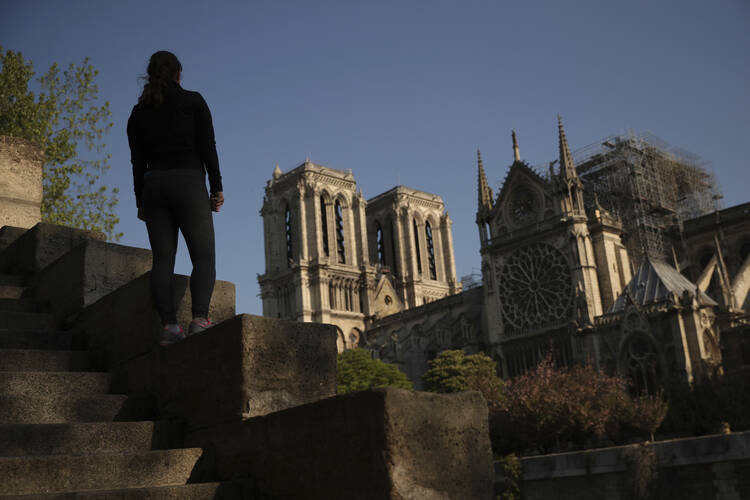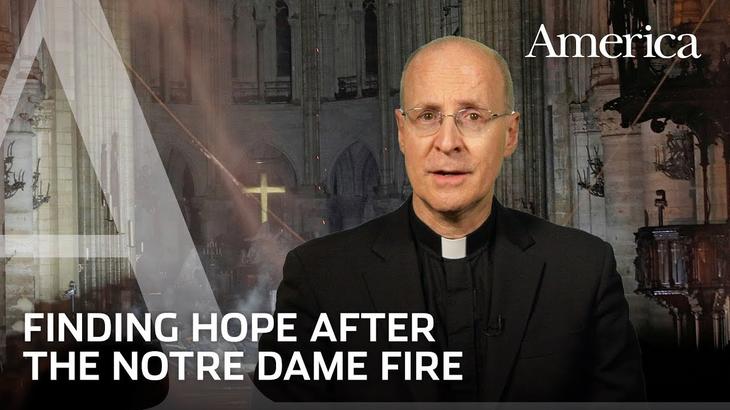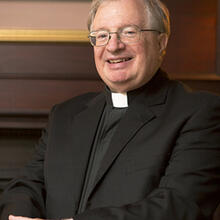The shock was palpable; the grief was profound; the sense of loss, universal. In the way few other tragedies have done, the fire that consumed part of Notre-Dame de Paris last Monday evening stunned the world into a state of collective introspection. The fire in the cathedral drove home the impermanence of things and the fragility of even humanity’s finest achievements.
Commentators noted the cathedral’s polyvalent symbolism as church, national monument, theater of French history and architectural and artistic masterpiece. Much of the commentary focused on its place as a treasury of civilization.
In The New York Times, Stephen Erlanger wrote, “France, a fundamentally Roman Catholic country whose citizens rarely attend Mass, understands the story and the meaning of Easter.”
“Notre-Dame,” he noted, “bears a special place because of its combination of the secular, the sacred and the profane.” One French analyst told him, “On one level it’s a physical symbol of Western civilization, even more than St. Peter’s in Rome.”
I, too, felt the loss to civilization. I was pained at what the fire was consuming of the West’s and humanity’s patrimony. But I felt a particular pain at the absence of serious articulation of Notre-Dame’s religious meaning and of Christian influence on civilization in the West. For two days there was much discussion of French identity, elevated talk of global culture and well-meaning but predictable religious commentary. Even seasoned medievalists seemed to miss the mark. If anyone needed proof that Pope Emeritus Benedict XVI had lost his struggle for recognition of the Christian roots of Europe, here it was.
Nevertheless, Notre-Dame is Mary’s shrine, a prayer in stone that gave Mary and Western Christianity a new human face. The Greeks praised Mary as Theotokos, or God-bearer, and she remained in the shadow of her son’s theophany. But French piety of the 12th century called her Our Lady, Notre Dame, at once elevating her and making her approachable; Mary and the Christian people were joined by the bonds of compassion.
In the “Virgin Mary with Angels,” a stained glass window at Notre-Dame, the artist depicts Mary in sacre bleu—the rich “sacred blue” that came to be associated with her images down the ages—reaching down to earth and heeding a supplicant’s prayer. The Cathedral of Notre-Dame was erected out of this devotional insight: that Mary is Our Lady, the gracious face of the divine presence to humanity. The shadow of the “oriental potentate” God, as Alfred North Whitehead described him, had been penetrated by the faith of the people who experienced divine compassion in the person of Mary.
Notre-Dame was erected out of this devotional insight: that Mary is Our Lady, the gracious face of the divine presence to humanity.
Beginning with the Platonic renaissance of the 12th century, followed by the Aristotelian revival of the 13th century, medieval Christianity made notable contributions to Western humanism that are little recognized today. But Christian piety arguably made an even more influential and thoroughgoing contribution to the appreciation of human worth than did philosophy and theology, beginning with its reimagining of Mary as Our Lady. The piety of the Franciscan movement in its attention to the humanity of Jesus grew out of a similar incarnational sensibility that ennobled mortals in new ways. It was this decisive change in sensibility that made Christianity in the West different from that of the East.
Among the fruits of this devotion are the gem-like churches, beginning with Notre-Dame de Paris, inspired by Marian devotion. Inspiration was among Mary’s gifts. The idealized Lady is of the same as other inspiring women of the medieval period—like Dante’s Beatrice and the noble ladies celebrated by the troubadours as the inspiration for brave deeds by young knights. As the Jesuit poet Gerard Manley Hopkins would write centuries later, in her grace we are born “New self and nobler me.”
Since the French Revolution, Catholicism and the French state have had a strained relationship. Try as it might, France cannot throw off its Catholic patrimony. The crowds of Parisians and visitors praying and singing hymns as they watched the fire burn and waited for it to be extinguished witness to the survival of faith in our secular age. Bruno Tertrais, a French scholar, told Mr. Erlanger, “I would like to think that this horrible fire will give us a chance to reconcile our views on the role of Christianity in our history.”
Devotion to Notre Dame has been a wellspring of Western civilization as we know it.
In the wake of the fire, perhaps today’s “cultured despisers” of religion will come to appreciate how devotion to Notre Dame has been a wellspring of Western civilization as we know it, not just in our art and architecture but for our fundamental values, especially the unique worth we ascribe to the human person.













The first symbol of modern civilization is Notre Dame in Paris. http://bit.ly/2Vpyd0V
Watch Kenneth Clark's Civilization, an amazing series by the BBC http://bit.ly/2IKWF5W
Thanks Father.